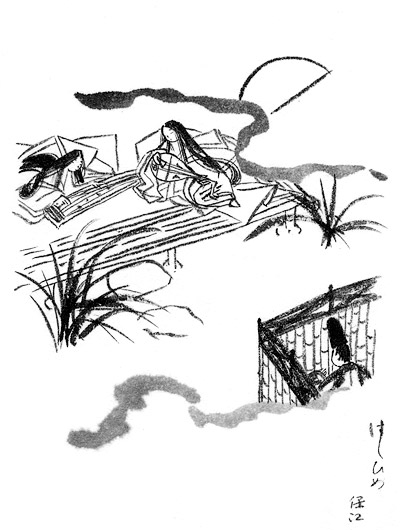|
||
 |
||
2 A noh mask *noumen 能面 representing a jealous woman who seeks revenge. Named after a lost play which literally translates as Bridge Princess, hashihime is heir to a complicated mix of oral and written traditions. The theme of a spurned woman haunting a bridge makes its appearance in such works as the poetry anthology KOKIN WAKASHUU 古今和歌集 (905/914). The version which seems to supply the basis for the mask relates how a woman, enraged by jealousy, goes to the Kibune Jinja 貴船神社 and petitions the gods to turn her into a demon so that she can have revenge. Her thick, furrowed brows cast a shadow over intense metallic eyes that stare straight ahead. The pale forehead gives way to dark reddish brown on the lower half of the face, symbolizing her extreme anger. Gold painted teeth are clearly visible in a grimacing mouth, and disordered strands of painted hair on forehead and cheeks heighten the impression of intense emotional turmoil. Worn by the protagonist, shite シテ, in the second act of KANAWA 鉄輪.

(C)2001 Japanese Architecture and Art Net Users System. No reproduction or republication without written permission.
掲載のテキスト・写真・イラストなど、全てのコンテンツの無断複製・転載を禁じます。

